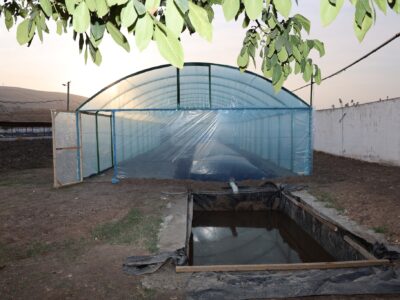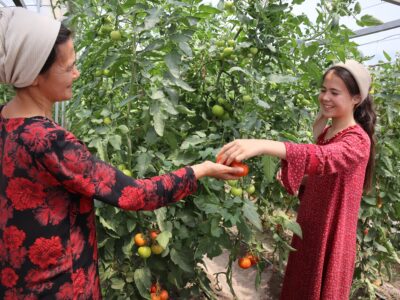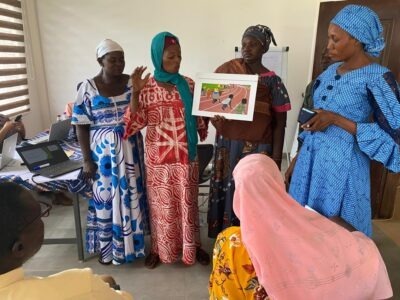
In 2012, Wegayehu Zenebe was one of 10 smallholder dairy farmers who made up the Selam Dairy Cooperative in Wondo Genet woreda, Kella town, near the city of Hawassa, Ethiopia. At the time, the cooperative housed only three crossbred dairy cows in a small rented barn.
To help boost the incomes of smallholder farmers like Wegayehu and other members, ACDI/VOCA implemented the USDA-funded Feed Enhancement for Ethiopian Development II (FEED II) project. The project supports farmers’ improved access to and use of high-quality feed for livestock. With supplemental feed comes greater livestock productivity and food security, especially in the face of frequent droughts that plague the region.
“ACDI/VOCA FEED II project has intervened during a critical period that challenged our existence and helped us for the success of the cooperative” –Bewnetu Gizachew, chairman of Selam Dairy Cooperative
With FEED II’s support, the cooperative grew from 10 to 18 members, nine of whom were female. Among them, Wegayehu saw first-hand what FEED II’s technical, material, and financial support could do. She now owns four dairy cows at her own farm, selling 38 liters of milk to the cooperative a day. Wegayehu says that members like her gained better access to concentrate feed and received training.
“The support from the project has enabled the cooperative to receive credit-based, concentrate feed supply from feed processing unions and to distribute to smallholder farmers.” –Haile Jula, a dairy cooperative member
The construction of a new, modern dairy barn provided extra space for the cooperative to grow from three to 18 cows and from 35 to 280 liters of milk processed a day. It also prevented livestock from experiencing environmental stress and enabled better waste management and feeding practices.
Through financial support, the cooperative acquired the necessary machinery and quality-testing equipment for milk processing, in addition to a three-wheel vehicle for transporting milk products. Ten members, all tasked with handling day-to-day business activities, also received training in small-scale milk production, collection and processing, as well as business management.
Each project intervention led to the cooperative collecting more milk from nearby smallholder dairy farmers and achieving more business linkages. This ensured a sustainable milk value chain. Now, not only does the cooperative run a small-scale milk processing facility, but also fully operates a forage and feed distribution business. And the benefits are evident, as members earn US $0.75 per liter of milk, an 88 percent increase in unit price since the start of FEED II.
By mid-2017, the cooperative that Wegayehu and many others rely on for their livelihoods plans to process 500 liters of milk a day, and in five years, up to 1,500 liters. Because of FEED II interventions, Wegayehu says that for the first time, her community has a sustainable market for milk products. That means better incomes and overall economic growth for Wegayehu and others like her.








